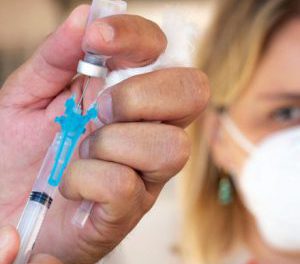October 22, 2024 – In a concerning trend, cases of walking pneumonia among young children are on the rise across the United States, according to a recent alert from the U.S. Centers for Disease Control and Prevention (CDC). Health officials report that bacterial infections caused by Mycoplasma pneumoniae have surged since late spring, with infection rates remaining high throughout the summer and early fall.
The CDC noted in a statement that a growing number of emergency department visits for pneumonia have been linked to M. pneumoniae, with the sharpest increases seen in children between the ages of 2 and 4. This marks a significant shift, as M. pneumoniae has not traditionally been a leading cause of pneumonia in this young age group.
“The increase in children ages 2–4 years is notable because M. pneumoniae historically hasn’t been recognized as a leading cause of pneumonia in this age group,” the CDC said. The data shows that nearly 7% of pneumonia-related emergency room visits for children in this age group were tied to M. pneumoniae infections as of late September, down from a peak of over 10% in August.
Geographic Trends and School Outbreaks
The highest concentration of cases has been reported in the central United States, particularly from Texas to Iowa. However, other states are beginning to report similar surges. The Wisconsin Department of Health Services has received multiple reports of unusual pneumonia cases in school-aged children and young adults, believed to be linked to M. pneumoniae.
In Illinois, health officials have also noted an increase in cases, with several clusters reported in schools. “These cases are suspected to be caused by M. pneumoniae, a bacteria that primarily causes respiratory infections,” Illinois health officials said. The bacteria can also trigger non-respiratory symptoms, including rashes, neurological issues, and cardiac complications.
Rising Respiratory Infections Nationwide
In addition to walking pneumonia, the CDC is tracking a rise in cases of rhinovirus and enterovirus, which are nearing levels seen during previous fall surges. Experts warn that this situation may worsen as colder weather and holiday gatherings bring more people indoors, increasing the risk of respiratory infections spreading.
Pediatric pneumonia cases requiring hospitalization have spiked by 30% in parts of Virginia, according to VCU Health. Dr. Marian Michaels, a professor at Children’s Hospital of Pittsburgh, commented that while the surge is concerning, it’s too early to determine whether this year’s outbreak will lead to a significant increase in hospitalizations.
“While the numbers are perhaps increasing a bit, they are still below the pre-pandemic levels for now,” Michaels noted. The CDC continues to monitor the situation closely as health departments nationwide report rising numbers of both bacterial and viral respiratory infections.
Prevention and Public Health Measures
Walking pneumonia, though generally less severe than typical pneumonia, can still cause significant illness, particularly in young children. Symptoms include fever, cough, sore throat, and fatigue. Health experts recommend that parents and schools be vigilant for early signs of illness, especially in regions where cases are surging. As always, good hand hygiene, avoiding close contact with sick individuals, and staying up-to-date on vaccinations are crucial in preventing the spread of respiratory infections.
Federal health officials urge parents to seek medical attention if their child develops persistent symptoms of pneumonia, including difficulty breathing, chest pain, or prolonged coughing, as early diagnosis can help reduce complications.
With respiratory illnesses expected to climb as the colder months set in, the CDC is emphasizing the importance of awareness and early intervention to prevent further spikes in cases.












